Savings: £330 per each tooth in a bridge | Time required: Five days or two short visits to Krakow in Poland.
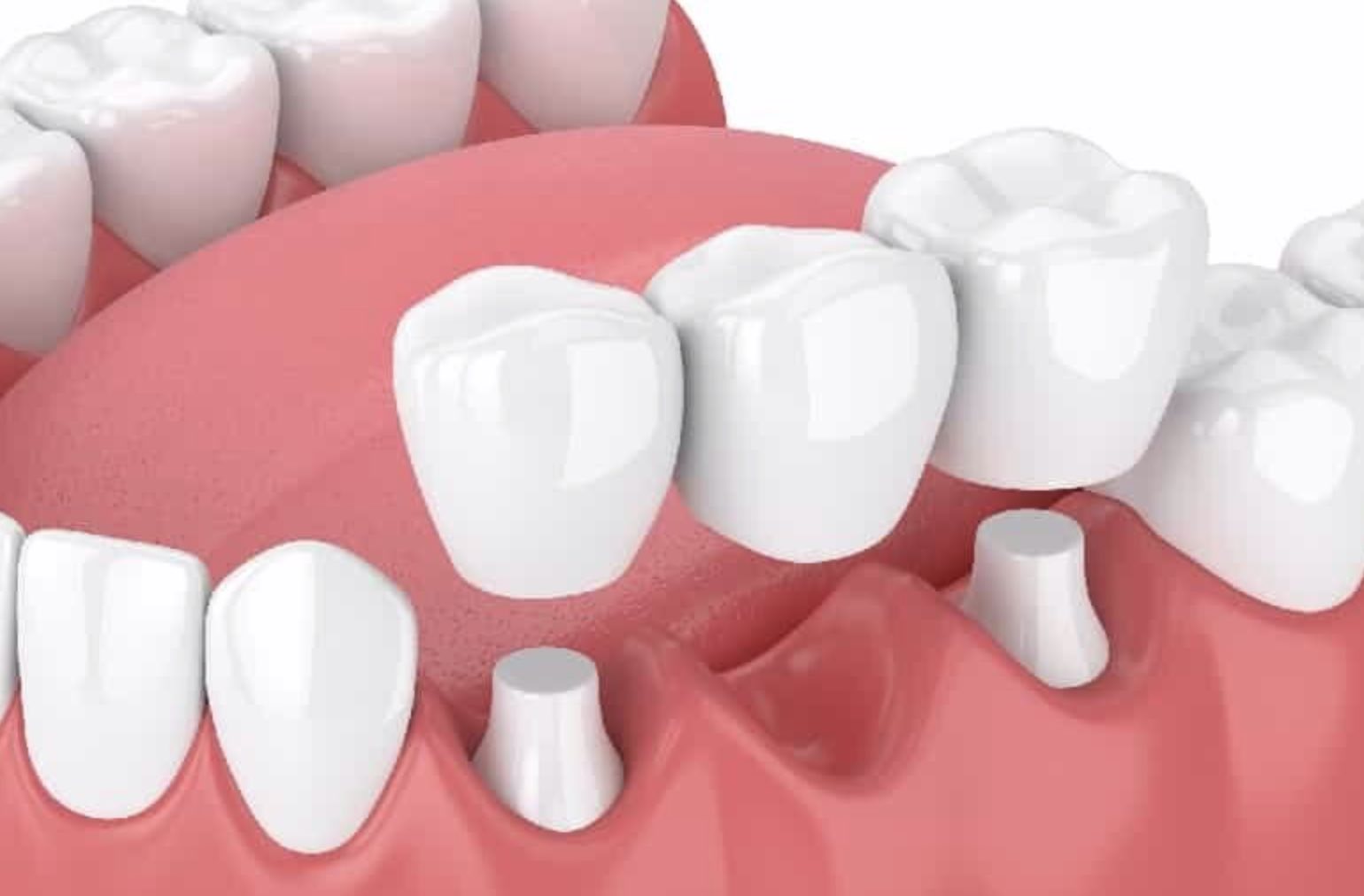
When a tooth has fallen out or been removed, a bridge can be used. The bridge is made up of artificial teeth which are permanently fixed to healthy supporting teeth by crowns.
Our dentists in Poland are able to make the complete teeth bridge from start to finish on one trip to Krakow. The cost of such dental bridge is 60-70% lower in Poland than you would have to pay in the UK’s private dental practice.
Dental bridge in stages
Bridges are usually made of porcelain bonded to precious metal. Sometimes other non-precious metals are used in the base in order to strengthen the bridge. There are also new bridges available which are made entirely of a special type of strong porcelain. In our dental clinics in Poland we mainly specialize in standard porcelain and zirconium teeth bridges.
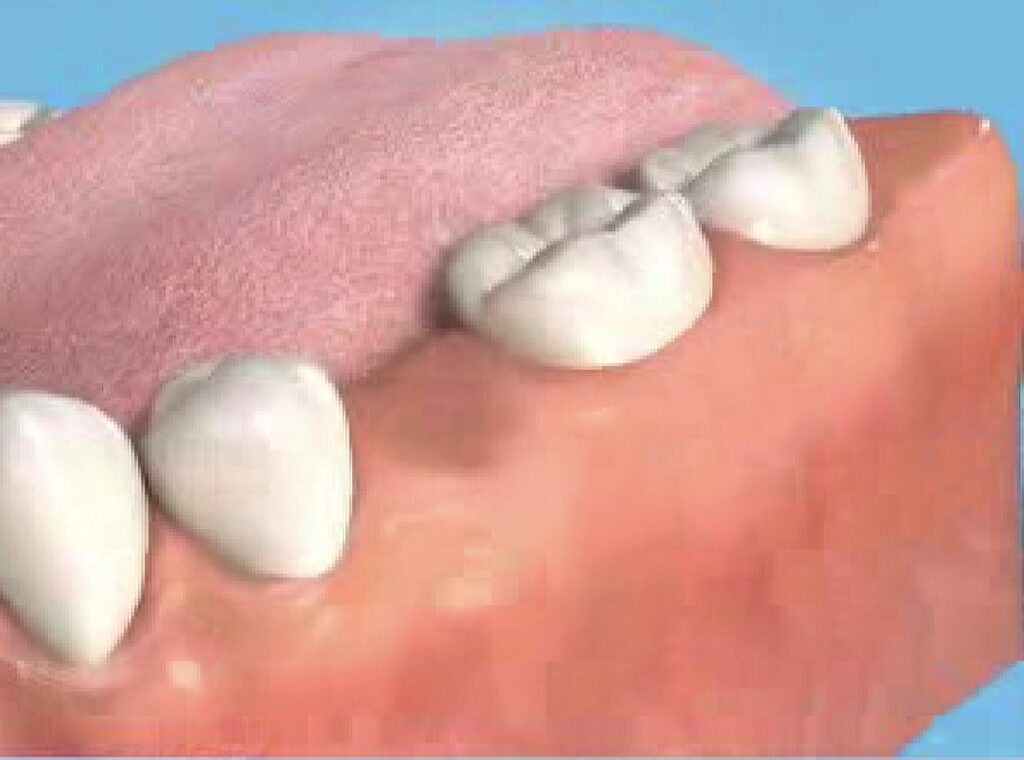
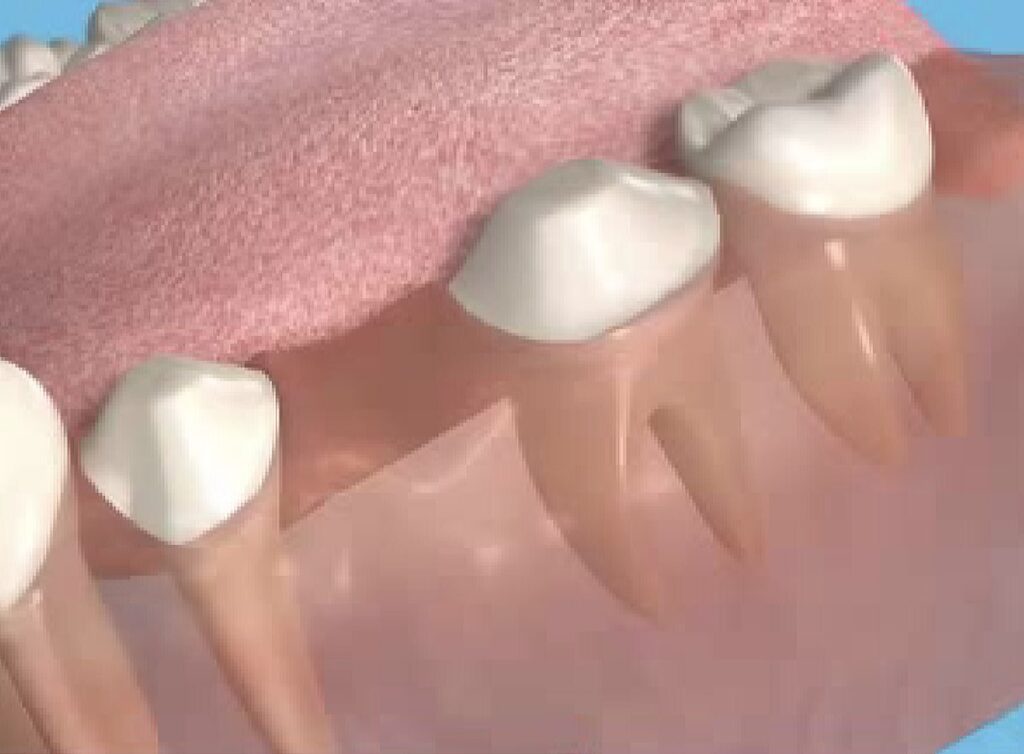
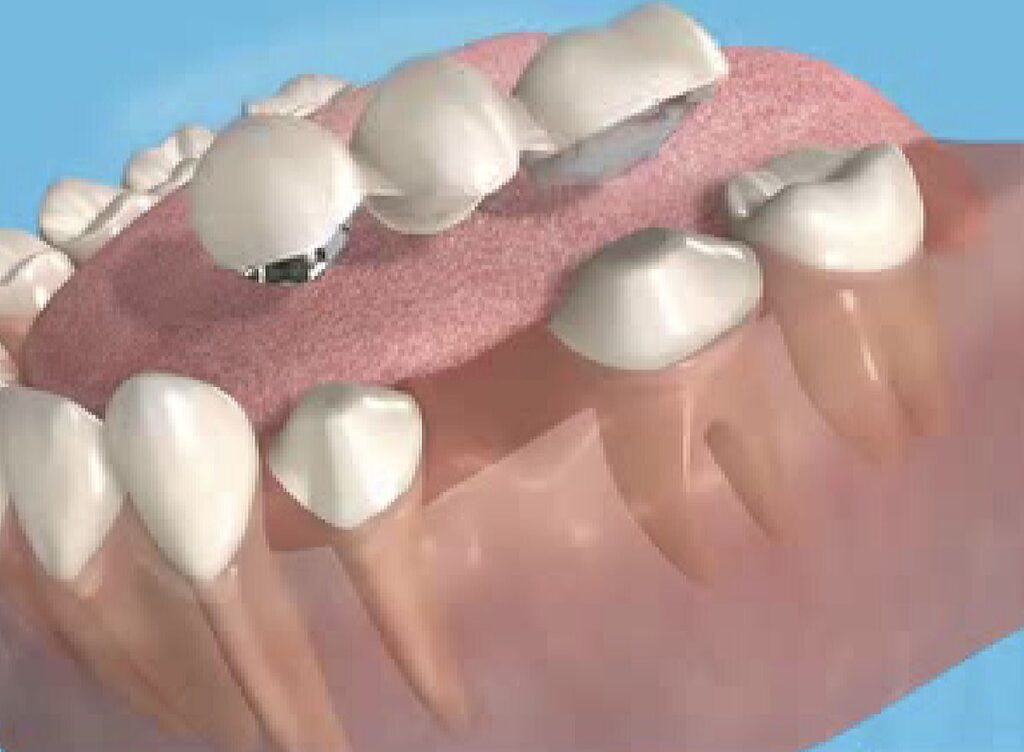
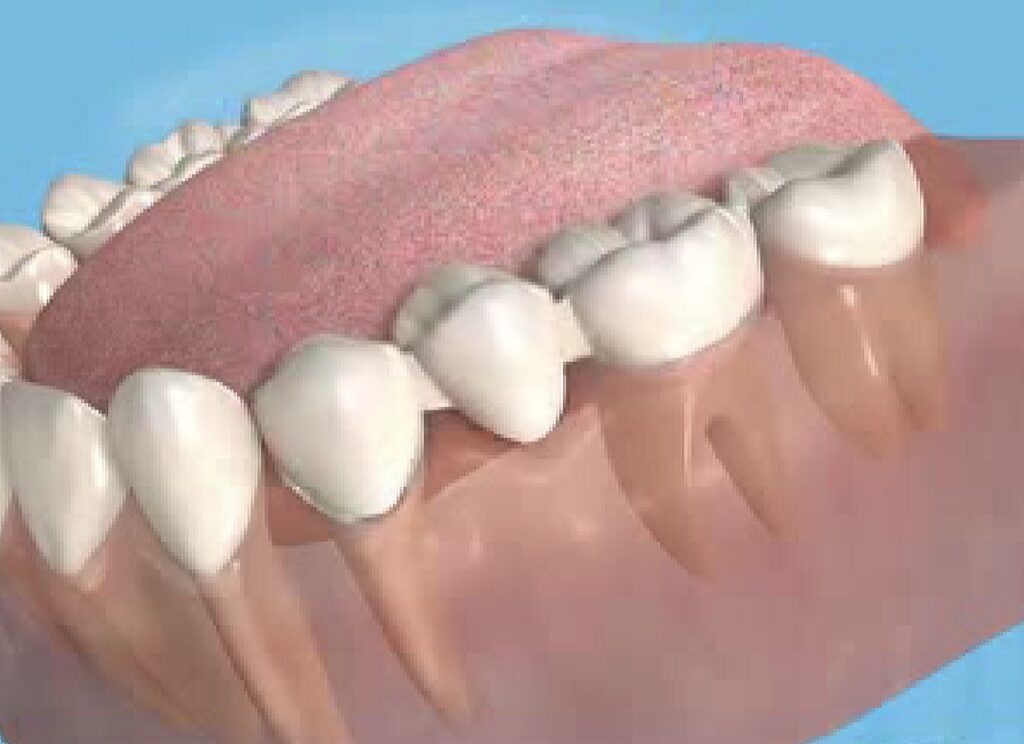
Dental bridges are fitted different and depending on the type of bridge you have fitted; they can even replace your molars. That’s the teeth you use for chewing through tough foods so if you’re replacing a tooth used for eating; you definitely need something strong.
The cost of dental bridge in Poland
The cost of the three unit (three teeth) standard porcelain bridge in our clinics in Krakow start from the equivalent of 660 British Pounds. The same three unit bridge in London for instance costs 1650 Pounds.
Other important thing is that our dental laboratory in Poland is able to produce such a bridge within 4-5 working days, which means that on one trip to Krakow the bridge can be completed from start to finish.
The strongest type of dental bridge
Not surprisingly, the strongest bridge type is the traditional bridge, and that’s because they’re held in place by two supporting teeth – one either side of the missing tooth. A fake tooth is attached to two crowns, and a dentist will need to prepare the two surrounding teeth to make room for the crowns to fit. This is done by filing down some of your natural teeth enamel on the surrounding teeth so that crowns can be fitted over them. So, you will need healthy strong teeth on both sides of the tooth that’s being replaced. A dentist will take a mouth impression so that a dental lab can make you a custom bridge to fit the exact measurements of the gap that’s to be filled with the abutments (supporting neighbouring teeth) having the right thickness of crowns so that the bridge slides easily into place.
Once fitted, it can be permanently cemented into place, but that’s usually done after a waiting period to make sure that the bridge does indeed fit and that it’s not fitted too tight that it makes it uncomfortable or even painful to eat.
If there’s only one healthy tooth surrounding the gap that you need to be filled, a cantilever bridge can be used. Like the traditional dental bridge, the process is the same with the only difference being that only one strong and healthy tooth is needed to support the fake one. Instead of two crowns and a fake tooth, only one crown is used over a strong, healthy tooth and a fake tooth attached to that.
The dental bridge with no crowns needed
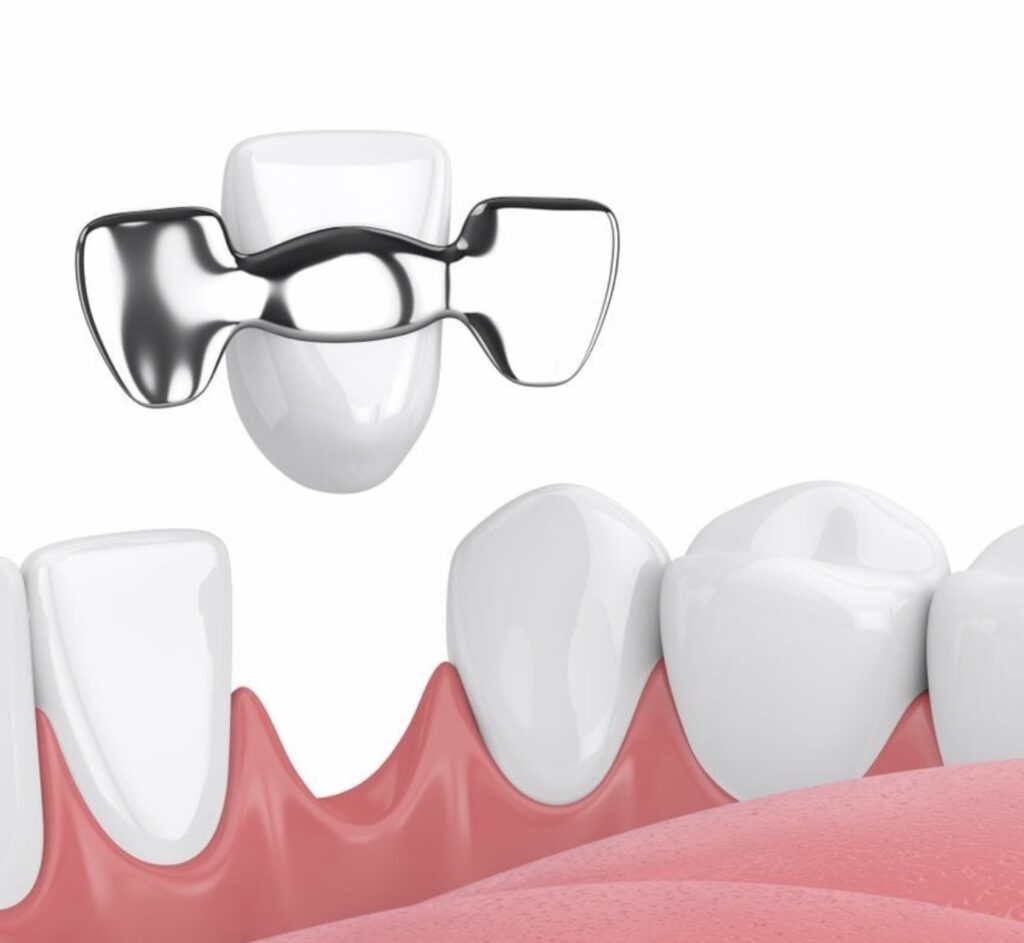
A way around having your natural teeth enamel filed down to have a crown fit over it supporting a fake tooth is to use a Maryland Bridge. It’s an alternative that uses a framework (plastic or metal) that fixes to the back of neighbouring teeth. The gap is still filled without any filing of your natural teeth needed, but there is a drawback, and that’s in the strength of the Maryland Bridge.
When subjected to a strong bite force, they might not stay in place. If you’re considering this option, a dentist will usually assess your bite first because this type of bridge isn’t recommended for those with a crossbite or those with a tendency to grind their teeth as they aren’t as strong as other types of bridges. They are more affordable but how long they last will be determined by how strong a bite force they’re subjected to.
The best dental bridge material for replacing front teeth
A number of materials can be used for dental bridges and other supporting treatments to replace missing teeth. Some are strong plastic composites; others are metals and precious metals. The type of material used is best decided based on where the bridge is being placed because placements play a role in how the bridge will be used.
Generally, for replacing molar teeth, the stronger the material, the better, because those are going to be subjected to regular use for chewing your foods, whereas on your front teeth, you’re not going to use them for eating as much. For front teeth, porcelain bridges can closer resemble your natural teeth, making it possible to achieve a natural-looking smile with full-colour matching to your natural teeth enamel. For molars around the side of your mouth, colour matching isn’t as important as strength because those are for functional purposes and not solely cosmetic. Plus, there’s the added advantage that it fills the gap preventing neighbouring teeth from shifting. When gaps in your teeth aren’t filled, your natural teeth can move, and that can alter your jawline contours.
For that reason, whenever you lose a tooth, it’s best to talk to your dentist about possible treatments to replace missing teeth. Dental bridges are just one option.
Questions on dentistry bridges
Why should missing teeth be replaced?
For most people, the appearance itself is reason enough to replace missing teeth. The gaps left by missing teeth can put greater strain on the teeth either side of the gap, meaning that they are more likely to be damaged. Gaps will also affect your ‘bite’ owing to neighbouring teeth ‘leaning’ into the gap and affecting your overbite or underbite. Food will get trapped in these gaps, leading to decay and gum disease.
How are missing teeth replaced?
This depends entirely on your own personal situation. The surrounding teeth will affect the decision quite drastically as these will be a primary concern. Missing teeth can either be replaced with a removable false tooth (partial denture) or with a fixed bridge, which is best used in situations where there are fewer teeth to replace.
Can I always have a bridge to replace missing teeth?
Only if your teeth are strong enough and have adequate bone support. Your dentist will be able to take scans and advise you of the best way to replace missing teeth.
What are bridges made of?
Dental bridges tend to consist of a precious metal base, with porcelain bonded to it if it is likely to be visible. Non-precious metals are occasionally used in the base if cost is a concern.
Are bridges expensive?
Dental bridges may seem expensive at first, but you should bear in mind the long lifetime of your new bridge. Your appearance and bite will be improved dramatically owing to the skill of the dentist and technician. The materials used are of the highest quality and also have a cost associated with them.
How do I look after my bridge?
Your bridge must be cleaned every day, just like your normal teeth, in order to prevent problems occurring. You should clean underneath your false tooth as well. Your dentist will show you how to use special floss or bridge needles in order to clean your bridge, as normal toothbrushes will not be effective for the job.
Are there other methods for fixing false teeth?
Other methods can be used, including combining crowns and dentures, but these are particularly specialised and should be recommended by your dentist under special circumstances. Teeth can also be implanted if necessary.
